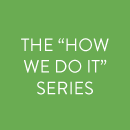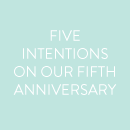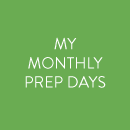16 October 2013
The other day, I brought chicken nuggets and macaroni and cheese leftovers to lunch for work (because I am a grown-up). To help legitimize myself, I will say that the mac was Annie’s (add plain yogurt!), and the nuggets were homemade, and baked. Whenever anyone hears about these nuggets, they always want the recipe, so I thought I’d post it for y’all to enjoy! You can find it here. I’d recommend following it exactly, except that we bake the panko for about half the time she recommends. They’re delicious, and it’s so nice to know (if you’re going to eat chicken nuggets anyway, as obviously I am), exactly what’s going into them!

Martha Stewart
Speaking of lunch, I would love to hear: What do you bring every day? And when did you start making your own lunch? My sisters and I still feel disadvantaged because our parents made us pack our own lunches starting in second grade (which means I ate a granola bar and a cup of apple sauce for about eleven years, and was very jealous of my friends’ brown bags).
Now, John and I eat leftovers from the night before almost every day for lunch. We cook dinner six nights out of seven, and actually plan our meal schedule for the week based on which recipes make leftovers or are easily packed and which do not! (More about meal planning soon, if you’re interested.)
How about y’all?
14 October 2013
One of my favorite pastors preached a great sermon yesterday on the topic of money (first in a two-part series; you can find them both here). Highly recommended! He briefly touched on retirement savings, which reminded me that I owe y’all several more posts on the same topic. I loved hearing your thoughts in the comments on our first post in this mini series, and now it’s time to get into specifics. We’re continuing with a beginner’s guide to 401ks! Let’s go with a question and answer format today.
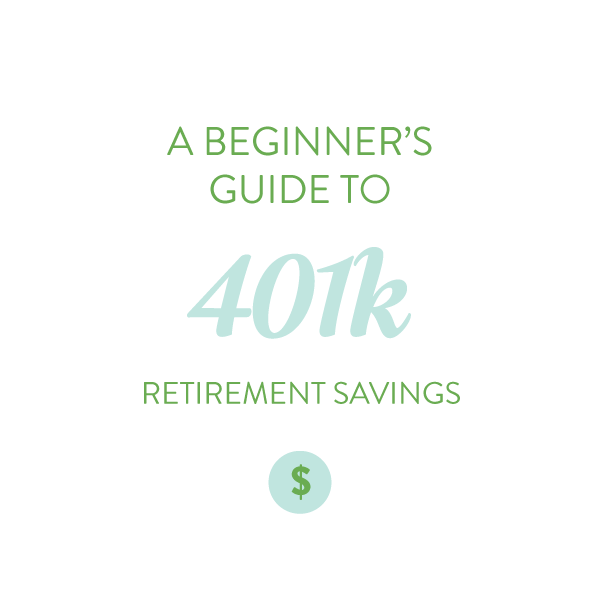
What is a 401k?
A 401k is a retirement savings account offered by some employers (usually larger ones). If your employer does not offer a 401k plan or you are self-employed, you’ll probably want to save via an IRA, which we’ll cover in a future post.
A 401k is not an investment — it’s just the type of account that holds your investments. Investment options within a 401k are determined by the employer.
What investments can I make through a 401k?
When you sign up for your 401k, you’ll be presented with a list of your investment options. Some plans will have hundreds of options, and some plans will have fewer than a dozen — it’s up to your company. All of the investment options will be mutual funds, with one possible exception: company stock. Some plans do include a feature that allows more advanced investors to expand their options to include stocks, bonds, CDs, and other investment vehicles.
What about the company stock?
I assume that you like the company you work for, and believe in what they do. (Or at least, I hope so!) So, should you invest all of your 401k in your company stock? NO! If your company offers their stock as an option, do NOT put all your money in it, for one reason: diversification. A simple and quick example of why diversification is important: if you’re riding in an elevator, would you prefer to have it suspended by one or twenty cables? Don’t put all your eggs in one basket, no matter how good you think it is. Many experts recommend investing no more than 5% of your assets in your company stock.
How much should I contribute?
For 2013, the maximum amount you can contribute is $17,500 if you’re under 50. There is no minimum. $17k sound like a lot? John and I love Megan McArdle, and she recommends saving 15% of your gross income for retirement. (Yes, even though, as she says, “When I tell people that they need to save 15% of their income, I am greeted with the same sort of disbelief that might greet a suggestion that they move to Tanzania and become big game hunters.”)
15% is so much! Help!
15% IS a lot. If it’s not feasible for you to start at that level, save at least enough to get your full company match. This is FREE MONEY. What does it look like? A common way companies will do this is to give you $1 for every dollar you save up to 3% of your pay, and then give you $.50 for every dollar you save on the next 3% of your pay (but every company is different). The end result? 10.5% of your pay is added to your retirement savings account, and you only have to contribute 6%!
How about taxes?
There are two ways to contribute to your 401k, and both have tax benefits, because the government wants you to save for retirement! Number one: Most plans let you save your money pre-tax, which means the money you’re contributing to your 401k gets deducted from your taxable income on every paycheck. Down the road, when you take the money out (in retirement), you’ll have to pay taxes on all the money. Tax benefits today, taxes when you withdraw.
Number two: An increasing number of 401k plans are offering Roth contributions, which is basically the reverse of number one: you pay your regular taxes on your contributions, and when you withdraw the money, assuming you are over 59.5 and you made your first Roth contribution at least five years earlier, there are no taxes on the withdrawal. Taxes when you contribute, no taxes when you withdraw.
Since a 401k is offered through my employer, what happens if I leave my job?
Excellent question! One of the biggest mistakes people make is to withdraw their 401k savings when they leave their job, so we’re not going to do this. Another poor option: Leaving it at the company you’re leaving. It’s harder to manage that way, and your former company might charge you fees or change your plan. Better options: “rolling over” the money to an IRA or a new 401k offered through your new employer. Remember that the money YOU contribute to a 401k is yours, as are any company contributions you’re fully vested in. (Companies usually give you the right to their contributions based on your length of service — for example, they might vest a third every year until you’re fully vested after three years.)
If you haven’t discussed your options with a representative of your company or plan before, this is a GREAT time to do so! In fact, this is a great time for me to remind you that I am neither a financial planner nor a tax adviser, and that this is a very basic guide to 401ks. Retirement savings are VITAL but can be complicated, so I highly encourage you to seek guidance along the way.
One thing that’s not complicated? STARTING! I hope this post has given you the encouragement to do just that :)
4 October 2013
October might seem like a strange time to discuss vegetable gardening, but here we are! John and I tried a few new things this year, and I wanted to get through (or almost through!) a growing season before we discussed.
To back up a bit, I’m convinced that 80% of the reason my husband wanted to buy a home was so that we would have space for a vegetable garden. Thus, our raised bed was in the ground less than a month after we moved in. We opted for a pre-fab kit from Home Depot; it was about $100 including tax and shipping. Based on the reviews, we expected to be pleased, and we definitely have been so far. It required no tools to put together, and since we literally assembled it in the dark (we were leaving for vacation the next day!), I have no doubt you could do so, too. Soil to fill it was about $100 more, but like the bed, that’s pretty much a one-time expense.
Here’s what it looked like in July:
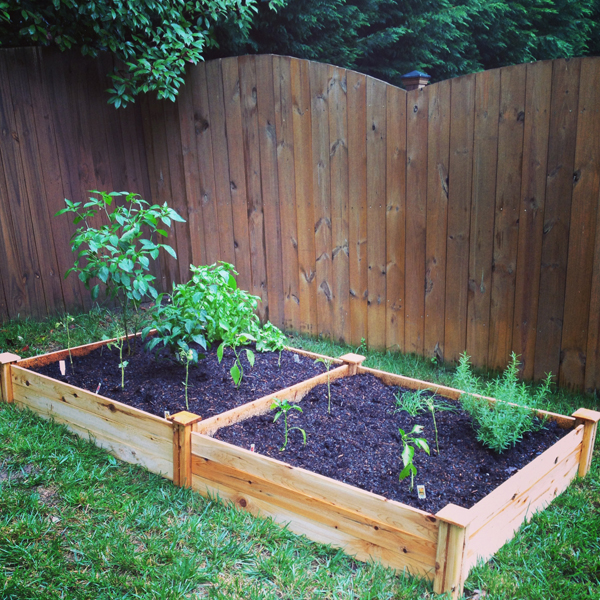
The cayenne, jalapeno, basil, chives, and rosemary (left to right) were transplanted from pots we started at our apartment, so they had a bit of a head start. The remaining plants (Brandywine tomato, super sweet 100 cherry tomato, yellow pear tomato, and bell pepper) we actually got for FREE from our local garden store because we were so late in the season and they were looking sad and spindly. We definitely did not have high hopes for them, but we figured we had nothing to lose!
Fast forward a few weeks, and things were looking much better!
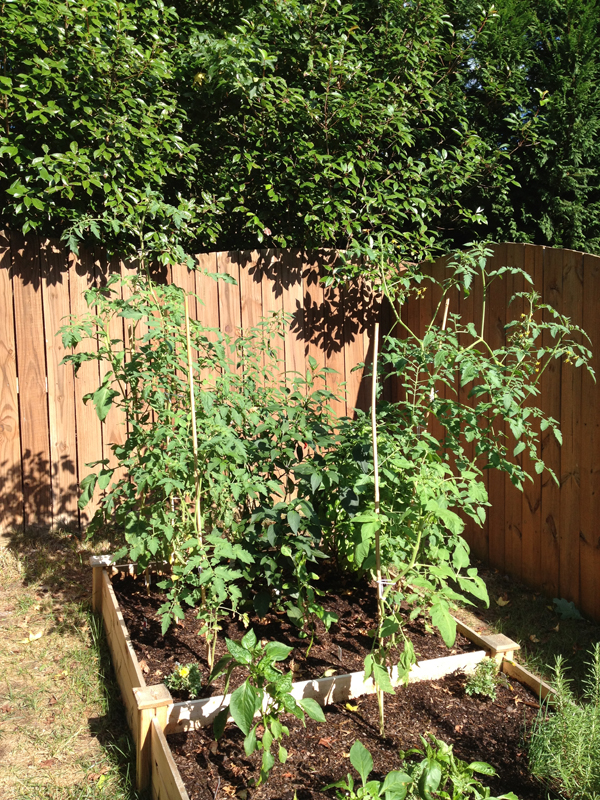
Our transplanted pepper plants continued to be total champs — we could count more than 50 peppers on the cayenne plant at one time, and the jalapeno wasn’t far behind! The tomatoes rapidly improved, as well, as you can see.


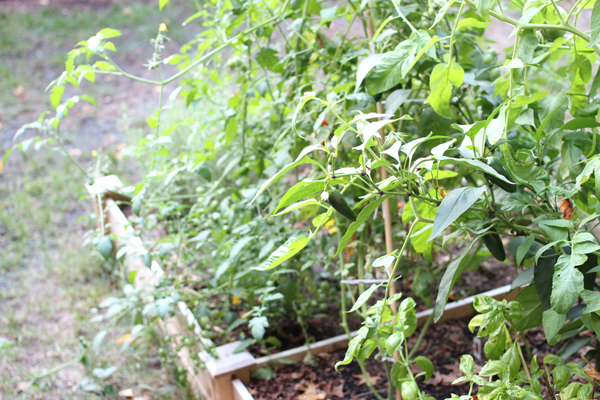
We actually just harvested and ate our first Brandywine tomato last night (YUM!) and have been enjoying cherry tomatoes for a week or two now. Better late than never, right?

John definitely deserves the lion’s share of credit for (literally) seeing this thing through to fruition — he was the chief water-er — but we both enjoyed plucking and pruning and puttering. If you have the space and the sun, I would DEFINITELY encourage you to consider a backyard vegetable garden! It’s amazing how much you can produce in such a small amount of space, and we loved eating things we watched grow. We were also able to give away extras to friends and family, and to our local food pantry, which was awesome! We can’t wait to see what we’ll grow next year, when we actually have a full season to work with.
I would love to hear: Do you have a vegetable garden? Pots of herbs? Tell me!
2 October 2013
I love the blog Design Mom despite the fact that I don’t have kids because I find Gabrielle Blair to be an extremely compelling person. My favorite column on her site is “Living with Kids,” where thoughtful interviews with moms are paired with home tours. The most recent feature was so good I had to share a snippet here. This home is by far more minimalist and modern than the ones I’m usually drawn to, and the color palette is much more muted, but for some reason it really struck me — I stared at several images for minutes each, just taking in every detail. It’s clean and cozy — a tough combination — and it’s curated in the best way, where everything seems meaningful and treasured, not styled. Of course, the beautiful architecture and copious fireplaces don’t hurt. All in all, it seems just right as we transition into fall.

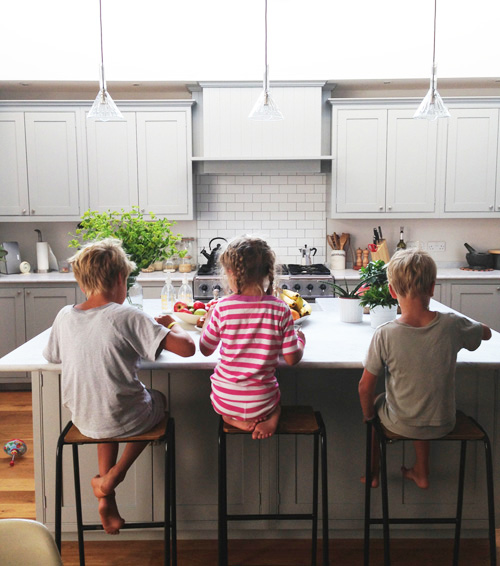
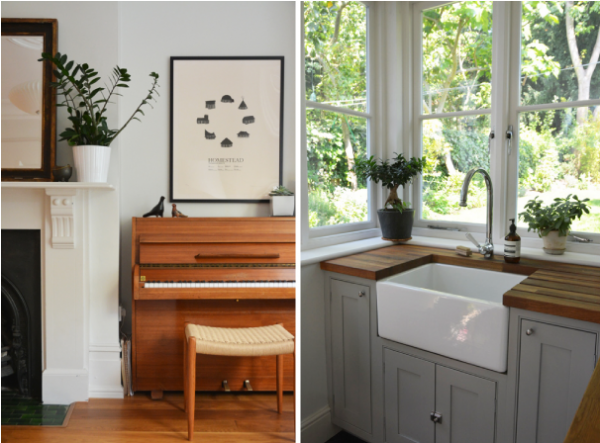
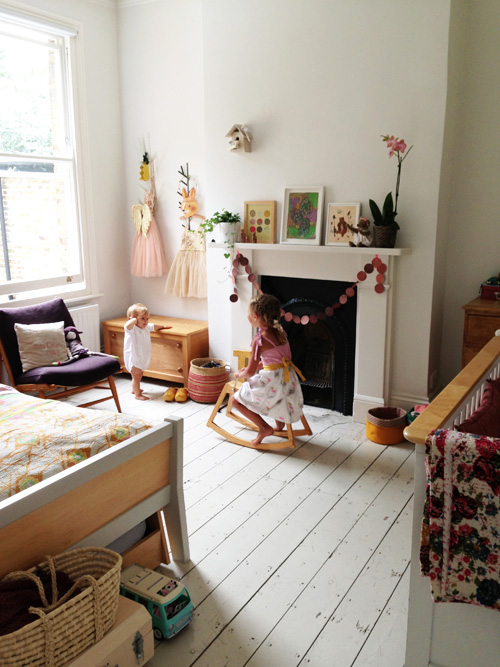
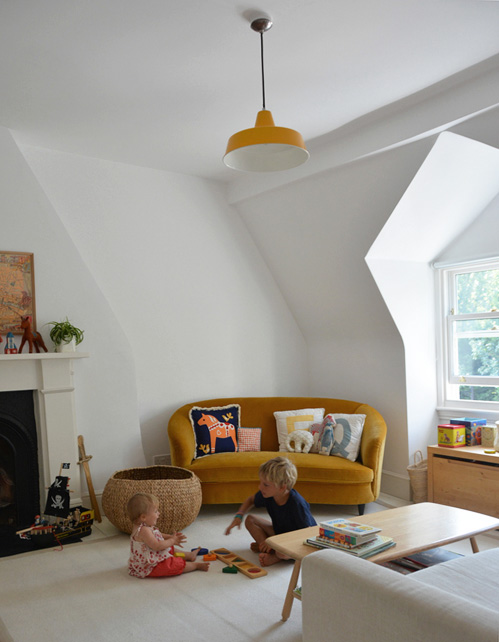
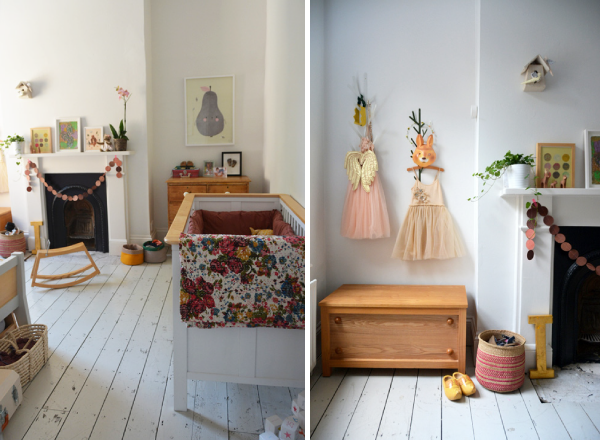

You can see the whole feature here, and I highly recommend you do! I had way too many favorites to post here.



























